|
Food digestibility and nutrient bioavailability are at the heart of nutrition. Digestibility is a measure of how much nutrition a food provides in a given volume. It indicates how much of the food is absorbed by the gut (intestines) into the bloodstream. It is the difference between what your cat eats and what your cat excretes. Nutrient bioavailability is the proportion of the absorbed nutrients that are carried to target tissues and are available for use by the body. Because a highly digestible food provides a higher proportion of absorbed nutrients than a less digestible food, digestibility provides an important measure of a food’s nutritional value and quality. In general, as the quality of ingredients in the food increases, so will the food’s digestibility and nutrient bioavailability. To understand which foods will provide the highest digestibility to our cats, we need to understand a little bit about their physiology. 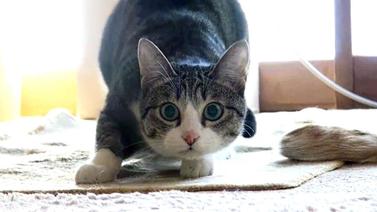
The Background We seek convenient food with our busy lifestyles. And most of us do not intuitively understand what cats need nutritionally to support their best health – they seem like little aliens. So we ask our vets. And despite the fact that 80% of cats over the age of three years have periodontal disease, many of our vets still tell us that for dental health, cats need kibble, and that to mimic their "natural" pattern of eating many small meals (being hunters of small mammals), we should leave the food out. We didn't know any better, and we trusted our vet to know what’s best for Bella. Or we free-feed kibble to our kitties, because that’s what and how our parents fed our cats when we were growing up, and those kitties lived long, healthy lives. So 80% of us go to the store and buy a bag of kibble, come home, and pour it into a dish we keep full for Boots, and Socks, and Tigger. And yet we keep Boots and Socks and Tigger indoors exclusively, where our childhood friends were usually indoor-outdoor cats, supplementing their dry diet with healthy, freshly hunted prey. (If your kitty brought you gifts, that most certainly meant he was eating them, as research indicates that kitty only returns one in four hunted animals to present as gifts to his family.) …except cats evolved eating high protein, moisture-rich food in the desert. Kibble:
This discrepancy between cats' needs and the dry food format has profound implications for their health, as discussed in our article Cat Food vs Cat health. Many assume the influence of living among humans would have had an impact on what cats have the ability to eat and use for sources of energy and nutrition, as appears to the be case for dogs. Nope. Not so. Not at all. Despite their proximity to humans for at least 10,000 years, cats retain their unique anatomic, physiologic, metabolic, and behavioral adaptations consistent with eating a strictly carnivorous diet. That is to say that cats, to this very day, remain obligate carnivores – and not just obligate carnivores, but hypercarnivores. By their genetic makeup, cats must eat the tissue of other animals in order to thrive. If cats were in charge of the pet food industry, food instructions would read “remove mouse or rabbit from freezer, thaw and feed.” That idea makes many of us laugh and say, "My cat would never eat that!" That is only because they weren't raised eating properly (for a cat!) and usually have to learn to eat biologically appropriate fresh raw foods, having been imprinted to commercial food options, that use chemicals and flavoring to keep them eating. For cats, a highly digestible food is moisture rich, low carb, and made with fresh, high quality animal proteins.
The Digestibility of Cat Foods
Merriam-Webster defines digestibility as “the percentage of foodstuff taken into the digestive tract that is absorbed by the body.” Simply put, it is the difference between how much food your cat eats and how much is excreted in stool. What they can’t digest, they excrete. Example: your cat eats one 5.5 ounce can of food a day. Your cat excretes 0.8 ounces of stool. That means your cat digested 4.7 ounces of the food she ate. 4.7 ounces of food absorbed divided by 5.5 ounces of food eaten = 85%. This food is 85% digestible. Yes, water is a factor, but not one we have to worry about unless comparing canned and kibble. The point is the difference between what they eat and what comes out is what is meant by “digestibility.”
Example Stool Comparison
On the left: Food: High protein (meat by-products), low carbohydrate canned with guar gum, food coloring and "natural" flavors Amount: 4.5 ounces per day. Frequency of stool: Daily On the right: Food: Homemade raw food made with EZcomplete fur Cats using beef as the boneless muscle meat. Amount: 4.5 ounces per day Frequency of stool: Every-other-day
Why does this matter? What does this illustrate?
Let’s look at protein, being so important to a cat. To determine the digestibility of protein (or any individual nutrient), the amount of the individual nutrient in the stool is determined. So if that 5.5 ounce can of food contains 19 grams of protein, and kitty excretes 3 grams of protein in the stool, kitty used, kitty absorbed, kitty metabolized 16 grams of protein. 16 grams of protein absorbed divided by the 19 grams of protein eaten = 84%. The protein in that food is 84% digestible. But different protein sources have differing digestibility due to their biological values, and different foods have varying ingredients that make the protein more or less accessible to the body. Example: Canned foods 1 and 2 both have 12% protein as listed on the guaranteed analysis. They both have the same moisture content of 72%. This means each 5.5 ounce can of food has about 19 grams of protein. Food 1 has a digestibility of 90% Food 2 has a digestibility of 80% Food 1: 19 grams x 90% = 17 grams of protein absorbed by the body Food 2: 19 grams x 80% = 15 grams of protein absorbed by the body Even though each can of cat food is labeled as having 12% protein and 72% moisture, and we expect they will provide the same amount of protein to our cat, they don’t. Food 1 provides more protein than Food 2. If we presume both canned foods have the same protein as the main ingredient, how can there be such a big difference in digestibility? Digestibility is impacted by many factors apart from protein sources, though protein quality is an important factor in digestibility of the food, and bioavailability of the nutrients. Differences arise from protein source, protein quality, the macronutrient content, other ingredient differences of the foods: the presence (or lack) of fiber, gums or thickeners, particle sizes, processing techniques, the temperatures achieved in processing – and, of course, the age and health of the animal eating the food. What Is a “High Quality” Protein? First, we need to understand that not all proteins are created equal, especially when feeding an obligate carnivore. As Mark Peterson, DVM (renowned small animal endocrinologist) says, “The biological value of a protein is a measure of that protein's ability to supply amino acids (especially the 11 essential amino acids required by cats) and to supply these amino acids in the proper proportions. It is well-established that animal proteins (e.g., meat, meat by-products) have higher biological values than vegetable proteins (e.g., corn gluten meal, soybean meal, soy protein isolate).” High quality protein is animal-based. High quality protein provides the 11 essential amino acids in proper proportions. The highest quality proteins come from fresh, raw human grade meats, not cooked meats, and not pet grade meats, which include diseased and downed animals in both canned and kibble cat foods. So how do we know which foods are highly digestible and provide the most nutrition to our cats?
Kerr at al 2012. Apparent total tract energy and macronutrient digestibility and fecal fermentative end-product concentrations of domestic cats fed extruded raw, beef-based and cooked beef-based diets. J Anim Sci 2012, 90:515-522
Hamper et al 2015. Apparent nutrient digestibility of two raw diets in domestic kittens, J Feline Med Surg 2015 Sep 23 When discussing cat food, “high quality food” starts by being a food that is appropriate given the cat’s physiologic and metabolic needs. This is called “species appropriate” or “biologically appropriate” food. It refers to food that best resembles their natural diet, the evolutionary diet of the cat. This will place the least stress on their GI system, provide the most nutrition, and thus support their best long-term health. That diet is
The importance of feeding a cat a highly digestible, species appropriate diet cannot be ignored nor overstated, not only for its nutritional aspect, but also for the strain a highly processed diet puts on the digestive system of the cat, particularly on the pancreas, in trying to digest a food that is void of proper nutrients and enzymes, ultimately resulting in inflammation. Many of the top diseases our cats suffer are directly related to their diets and can easily be avoided by providing them with whole food-based nutrition.
2 Comments
You finally won the battle of wills with your cat, transitioned him to a raw diet, and all of the sudden you prepare his meal with a whole bunch of love and care only for him to sniff it and turn around – What a slap on your face you think! What happened? It’s the same food he was devouring yesterday!
Cats! You think… Raw food made my cat sick!... Hunger strike! You think... He’s Just super finicky, or he’s playing a game on me! Or he doesn’t like the food anymore… You are at a loss. There are several possibilities to consider when a cat stops eating, especially when transitioning to a raw diet: The first, and the most important thing to do is to rule out illness.
Prior to transitioning to a raw diet, most pet parents are accustomed to feeding their cats the same food meal after meal, sometimes for years, and their cats never get bored – so they naturally think it will be the same way with raw. It is no coincidence that kitty never gets tired of kibbles. Kibbles, and many canned foods are meticulously “engineered” to keep your kitties eating them, by being coated with fat, having chemicals and flavors added to it that are both irresistible and downright addictive. If that was not the case, pets would not eat processed foods. Transitioning your pet from kibbles or even canned to raw is the equivalent of transitioning an adult human, a lot of times even a senior citizen, who has only eaten highly processed foods from a can, package, or a bag his entire life to a healthy diet of salads, veggies, fruits and low fat meats. Not an easy task. It can take time, patience and perseverance…. But it’s absolutely the best thing you will ever do for your cat’s health, and a very rewarding experience for you too! Keeping in mind that the beginning can be difficult, and sometimes it will seem you are taking two steps back and one forward, always remember two key things: This is not a race, it’s a journey, and to never, EVER starve a kitty into a new diet. If kitty is not eating and you must take a step back in the transition, take a deep breath, take a step back, and move forward. There is nothing wrong with it – as long as you keep moving in the right direction and don’t give up, you will get there! With that said, now that you have taken that step, what can you do to keep your cats interested on raw? VARIETY. Variety is key in keeping your cats eating a raw diet long term. You should aim to have at least three proteins on your cats’ diet – that will provide them not only with a well-rounded nutritional profile, but will keep them from getting bored. Once you transition your cat to raw, immediately start using that protein as a base using the slow transition technique to add a second protein to the kitty’s diet. You can then use both proteins as a base to slowly introduce a third protein to the diet. When you have introduced all the proteins, you can switch them back and forth. How often should you rotate proteins? I personally rotate proteins at every meal – my cats never eat the same protein twice in a row. While EZComplete is considered almost a topper by most cats with the dried liver, GLM and yolk, variety is still essential in keeping my cats happy, and has yet to fail me in all these years. You can also rotate daily, or every few days, but in my experience the more often you rotate, the more successful you will be in keeping your cats anxious for the next meal, and licking their plates clean. Try a different texture - Many cats also get introduced to raw on ground meats, and stop eating... Then they are offed a chunk of meat and voila! That happened to our Food Fur Life Cats… Pretty much all of them! So if your cat is currently eating ground meat and no longer wants the food, try giving a little chunk of meat and see what happens. It might be time to take your kitchen scissors out of the drawer! Offer a plain meal - Also part of our variety, is once a week they get one or two completely plain meals – yep – no supplements, nothing! Meat only. That makes them love both the meat and EZComplete even more! Use healthy toppers - If you still have problems, and we all do from time to time, you can always rely on healthy toppers to entice your cat to eat. In my home, chicken is not a favorite for my cat Lucky, and I have to admit, she is a master manipulator (anyone here can relate to that?) – so from time to time I do rely on her favorite treat as a topper, which….. you guessed it – is Freeze Dried Chicken! I just lightly sprinkle it over her meal, and she licks her plate clean.
The Importance of a Routine
It’s also very important to note that cats are creatures of habit – that’s not a myth. Establishing a routine for them from the beginning is very important – from a feeding schedule, to their eating places, and even to their own plates. A set routine will impact your chances of success greatly. Before feeding raw, I had the hardest time to feed even half an ounce of wet food to any of my cats – I would have to crawl under the bed for one, spoon feed another on the top of the cat tree… Let alone the food had to be made into a slurry on a blender and warmed up just so, otherwise they would not even consider it! Think I am lying? Watch the video below of me spoon-feeding Bugsy! This was mainly due to two things - feeding kibbles along with wet, and having no routine.
One of the most valuable advice I have ever gotten, and I got MANY, was to establish a routine right off the bat when transitioning to raw – I believe that was essential for my cats being the happy carnivores they are today. I can easily see how important this is when anything breaks that routine – they go off food until their routine is back into place. If your cat suddenly quit eating, consider if anything has thrown his routine off.
Last, but not least, please consider your kitties’ situation when you transitioned them to raw. Lots of pet parents make that transition due to an illness, specially IBD… There is a reason why we recommend a slow transition – always. Especially on adult or older kitties, after years of eating an unappropriated diet, it can take time for their bodies to start digesting raw properly. EZComplete has both Enzymes and pancreas, which helps with digestion, but there are some kitties that make the transition with a digestive system already very compromised. These cats should be given an extra slow transition, always be on probiotics (we firmly believe probiotics are an essential part of the diet for all cats), and depending of the age or condition of the cat, they might have to start with a homemade cooked diet balanced with EZComplete, and slowly transitioned to raw. If you just transitioned to raw and feel your cat might have a tummy upset, your transition might have been be too fast. Take a step back, always follow your kitties pace, keeping a close eye on them. Summarizing, if your kitty suddenly stopped eating:
Last week PetFoodIndustry.com published a blog post, "Simple, clean pet food labels: altering the discussion." The very premise of the article is quite ironic: consumer perception is the problem, not the pet foods. It's not that consumers are becoming better educated as to what provides the best promise of long term health to their animal companions. No, on the contrary, the "problem" is the failure of the pet food industry to properly educate the consumer about the existing ingredients in pet foods. After all, pet food is all about the science of nutrition. And, you know, "science is hard." The author asks "So, what is driving this clean label trend?" and answers: "Like many things, it is consumer demand, driven by perception. In this case, it is backed by nutritionists who agree that eating a diet made up of whole, unprocessed foods such as fruits and vegetables is better for our health. So, consumers will be compelled to read the labels of processed foods, looking for something that is as close to the original state as possible, but with the convenience of a packaged food." Consumer demand. Driven by perception. Backed by nutritionists who agree that eating a diet made up of whole, unprocessed foods is better for our health. Well, consider substituting "education" for "perception" and "Informed by" for "backed by" and see what happens. The concept then reads "Like many things, it is consumer demand, driven by education. In this case, it is informed by nutritionists who agree that eating a diet made of of whole, unprocessed foods ... is better for our health." Is this a bad thing, pet parents wanting to provide their pets healthy, whole foods? Well, if you are Mars, Nestlé, or Del Monte (with what has been renamed the Big Heart Pet Brands) - the largest pet food companies in the world - the knowledge that a solely processed food diet isn't healthy for us or our pets is a bad thing. As they are all also among the largest food and beverage companies in the world, of course they want to counter the notion that homemade and fresh foods are the best foods for us - and our pets. But if it is science they want, there is a growing body of it. Just a few weeks ago, a team of Australians from the Charles Perkins Centre and School of Life and Environmental Sciences at The University of Sydney published a report, Nutrition Ecology and Human Health. The message of the report is straightforward: nutrition science is broken. In a nutshell, while focusing on micronutrients had its place in our understanding of the importance of diet in combating disease, that nutritional model that breaks down nutrition into its components is fundamentally incompatible with the "new suite of nutrition-related diseases." "Food science" isn't failing just human health. There is - sadly - plenty of evidence the same holds true for our pets. As mentioned in our article, Cat Food vs. Cat Health, it is a relatively recent situation that approximately 60% of pet cats in the U.S. live indoor-only. This means that our little predators are not out hunting field mice, voles, rats, or rabbits. They have become completely dependent on us for their nutritional needs. What this also means is that health problems associated with the typical commercial diet are becoming ever more apparent, especially as access to veterinary care and safety from cars and predators contributes to their longer lives. Our cats are overweight, blocking from crystals in their urine, suffering dental disease, and GI disorders are rising at alarming rates, with the incidence of inflammatory bowel disease and pancreatitis now making the "Top Ten" lists of VPI Pet Insurance. Our cats are dying primarily of kidney disease and cancer. Surely food alone does not account for all of these problems. But at Food Fur Life we ask, how healthy would we be if all we ate was dry cereal and/or canned stew – all made with ingredients that weren’t fit for our consumption? No, Pet Food Industry, the problem is not lack of consumer education as to the "safety" of the ingredients in the diets you provide. Your problem is consumers are learning their carnivorous pets need whole, fresh, quality, species-appropriate foods for their best health, too. This is why we created Food Fur Life - to make healthy homemade food accessible to everyone. To make it easy for the busiest of pet parents to provide their pets a fresh, truly human-grade meat-based diet based on the prey model. Blending the best of mother nature and science, whether pet parents are time constrained, and feel they don't have the time to make their own pet food all from scratch, or whether there is concern about "doing it right," we have the solution. And it really is EZ, with EZcomplete.
Most of you must recognize the word "Kefir" from the milk/yogurt aisles in the supermarket.... But do you know what Kefir is? The word Kefir derives from the Turkish word keyif, which means "Feeling Good" , and it's believed to be original from the Caucasus Mountains. Its history is full of legends, and can be "traced" all the way to the Prophet Mohamed and mentioned by Marco Polo! It is also believed Kefir was used as a way to preserve milk by means of fermentation, in the absence of refrigeration and pasteurization. Kefir grains were added to milk, generally in a goat skin leather bag, and hung by the door. Everyone who went by or through the door, shook the bag with its foot. After 24 hours, the fermented milk was poured, and fresh milk was added to the grains, keeping the fermentation process constant. 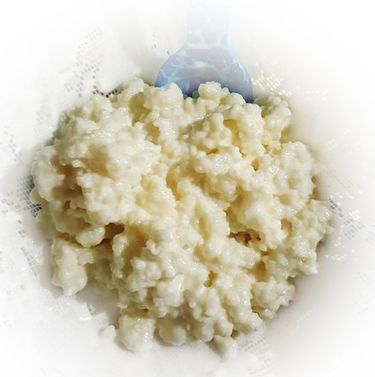
But just what are the Milk Kefir Grains?
Kefir grains are microbially derived protein and polysaccharide matrices that contain cultures of bacteria and yeast that are essential to Kefir fermentation. The bacteria found in the grains depend of several factors, including the Milk used during fermentation, the fermentation process itself, and even the region where the grains originate from. Mainly comprised of Lactobacillus, common bacteria strains include: Ref 1, Ref 2, Ref3 Lactobacillus acidophilus, Lactobacillus brevis, Lactobacillus casei, Lactobacillus delbrueckii subsp. bulgaricus Lactobacillus delbrueckii subsp. delbrueckii, Lactobacillus delbrueckii subsp. lactis, Lactobacillus helveticus, Lactobacillus kefiranofaciens subsp. kefiranofaciens, Lactobacillus kefiri, Lactobacillus paracasei subsp. paracasei, Lactobacillus plantarum, Lactobacillus rhamnosus, Lactobacillus sake, Lactococcus lactis subsp. cremoris, Lactococcus lactis subsp. lactis, Lactococcus lactis, Leuconostoc mesenteroides subsp. cremoris, Leuconostoc mesenteroides subsp. dextranicum, Leuconostoc mesenteroides subsp. mesenteroides Pseudomonas, Pseudomonas fluorescens, Pseudomonas putida, Streptococcus thermophilus Yeast Strains: Candida humilis, Candida Kefyr, Kazachstania unispora, Kazachstania exigua, Kluyveromyces siamensis, Kluyveromyces lactis, Kluyveromyces marxianus, Saccharomyces cerevisiae, Saccharomyces martiniae, Saccharomyces unisporus, Debaryomyces hansenii, Dekkera anomala, Torulaspora delbrueckii, Pichia fermentans, Saccharomyces turicensis, Issatchenkia orientalis and Debaryomyces occidentalis. Depending on what milk you use and on the quality of the Kefir grains, Kefir can contain anywhere from 1 billion to 10 billion CFU of bacterial/yeast probiotic per ml (cc). That is 5-50 billion CFU per TSP! It is important to note that Kefir grains, unlike the name suggests, are very much alive, and as such must be taken care of.... As any alive being, it must be fed - but what does it eat? That is the beauty of it: LACTOSE! In kefir, lactic acid bacteria are primarily responsible for the conversion of the lactose present in milk into lactic acid, which results in a pH decrease and milk preservation. Other kefir microbial constituents include lactose-fermenting yeasts that produce ethanol and CO2. Non-lactose fermenting yeast and acetic acid bacteria also participate in the process. After each fermentation "batch", the grains biomass increase in about 5-7%, which is why the bacterial/yeast composition varies according to the milk and process used for fermentation. Unlike the original days, the methods used to produce Kefir at home today differ in several ways. Of course no one is leaving a goat skin bag full of milk by the door to be pounded at, for one! Today Kefir is mostly made in glass jars, kept out of the sunlight to preserve the most amount of vitamins as possible. With that, comes one issue - The grains only feed what they can touch. While some will instruct to pour the milk over the grain in a jar, loosely cover it with a cheese cloth or a plastic lid, put the jar in the cabinet and forget about it for the next 24 hours, I beg it differ. By gently mixing the Kefir every so often you are making sure the grains are evenly distributed, therefore more lactose will be consumed, achieving a more thoroughly fermentation process. This is specially important for cats, which are mostly lactose intolerant. Another way of decreasing the amount of lactose is by doing what is called a "double fermentation" - you simply strain the Kefir after 24 hours into a clean jar, this time closing the lid, and place it into a dark cabinet for another 12-18 hours. The whey will completely separate from the curd, but a smooth texture can be achieved by using a blender. Not only Kefir is virtually lactose free, but studies show that Kefir can actually actually improve lactose digestion and tolerance overtime. The benefits are countless - not only Kefir is a powerful, natural, live probiotic, but it also: In multiple studies, consumption of kefir or kefiran in an animal model has been associated with an increase in microbes thought of as beneficial, such as Lactobacillus and Bifidobacterium, while simultaneously decreasing harmful microbial species such as Clostridium perfringens (1, 2), Reduces the severity of Giardia , inhibits the adherence of Salmonella typhimurium and E. coli, 1, 2, 3. Kefir has shown a multitude of antibacterial and anti-fungal activities and has been tested in disk diffusion experiments against a wide range of pathogenic bacterial and fungal species, found to have antimicrobial activity equal to ampicillin, azithromycin, ceftriaxone, amoxicillin, and ketoconazole (Cevikbas et al., 1994; Yüksekdağ et al., 2004; Rodrigues et al., 2005; Huseini et al., 2012). Kefir also has anti-inflammatory and healing properties, and was effective in postoperative treatments and in patients with gastrointestinal disorders. Several studies have shown Kefir to have anti-carcinogenic effects 1, 2, 3, and can also act as an anti-oxidant. But one of the major ways probiotic products such as kefir are able to produce health benefits is through the modulation of the gastrointestinal immune system. Kefir has shown in studies anti-allergenic and anti-asthma properties, is capable of decreasing the levels of blood glucose, improving the symptoms of constipation, among many other health benefits. It's important to note that the quality of traditional kefir is mainly influenced by the microorganisms present in kefir grains and kefir processing conditions. Although scientists and food companies attempted to develop a commercial “kefir-type” beverage produced by different cultures and mesophilic and thermophilic lactic acid bacteria, or even pure cultures isolated from kefir grains, their success when compared to traditional kefir is limited. It is suggested that this limitation is due to the microbial diversity present in kefir grains and their interactions, which can determine the probiotic and therapeutic properties of final product, as well as peculiarities conferred by certain minority groups present in different grains. How do you acquire Kefir Grains? Kefir grains are passed on from friends or family, or can also be bought online in sites such as Amazon. When consuming Kefir, you are drinking history! Think about it - you can't just create those grains out of nowhere.... They have been passed around from one person to another, until that they got to you! And the beauty of it? Every time someone used a different milk, a different processing method, temperature, etc - the microbioma in the grain has changed! You will notice that once you start making kefir on a regular basis, your grains will start multiplying exponentially - that's why they are passed around. What else can you do with them? You can eat them - they are just about the most potent probiotic you can get your hands on! Feeding Kefir to your Pets: We cannot stress enough the need to start SLOWLY. And we mean VERY slowly. Kefir is a very potent probiotic, with many substances your pet has never consumed. Dosage: Give a teaspoon to a tablespoon of kefir to small cats or small dogs a day. Medium size dogs – 1 – 2 tbsp. Large dogs – 2 – 3 tbsp. ***Cats specially: Start with 1/8 tsp, and increase every FEW days by doubling the amounts. Give your cat only 1/2 of the dosage for at least one to two weeks before increasing to 3/4 and so on. If your cat has any reactions to Kefir, you can try two things: 1- Do a double fermentation - still reacted? 2- Change the milk for goat milk - still reacted? Stop giving it. I personally had a cat react to kefir, to both Regular Cow's milk and Raw goat milk. I am giving him a break and will try a very slow introduction later on. My other cat seemed to react when I increased the kefir to 1/2 tsp per meal, however the problem was solved with a slower introduction, and a double fermentation. She is also ok with Goat Milk Kefir. I have substituted my cats', mine and my dog's store bought probiotic for Kefir, and everyone is doing terrific! Kefir has been the perfect addition to the kitties' EZComplete diet - how would it not be with so many wonderful properties? |
Archives
August 2021
Categories
All

|

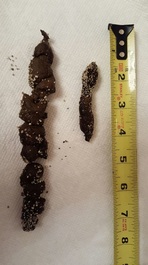
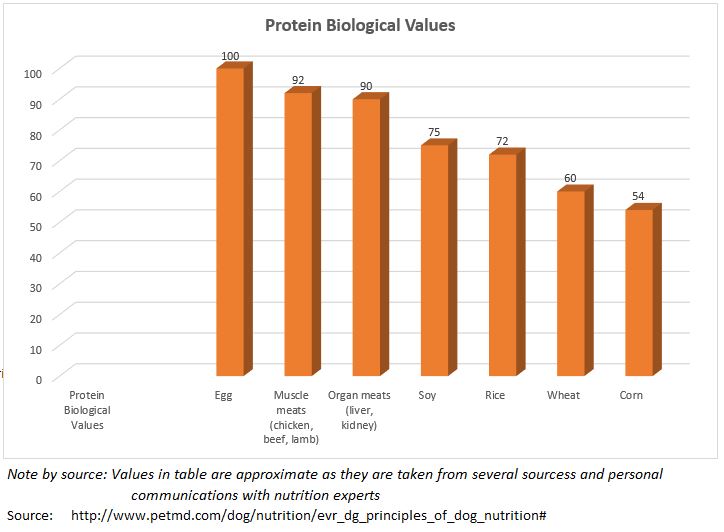
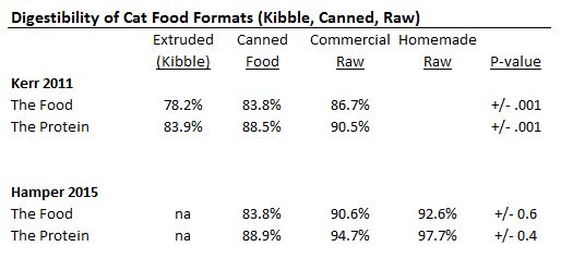

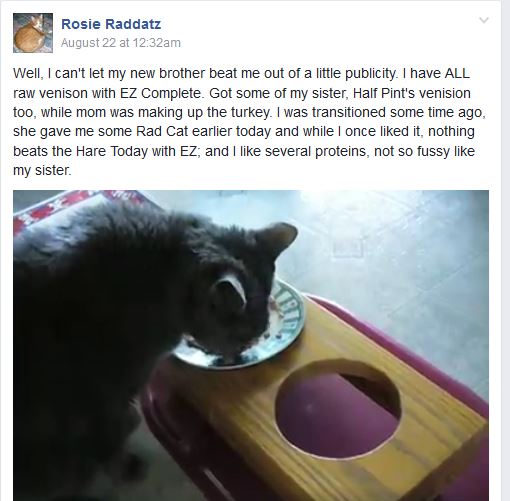
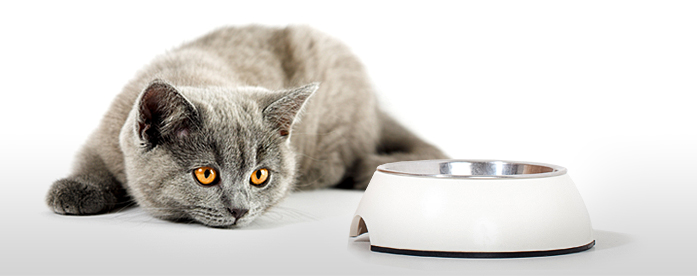
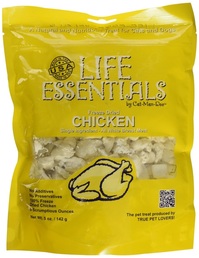
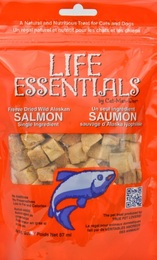

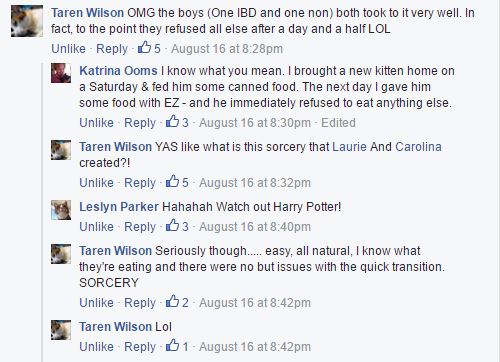
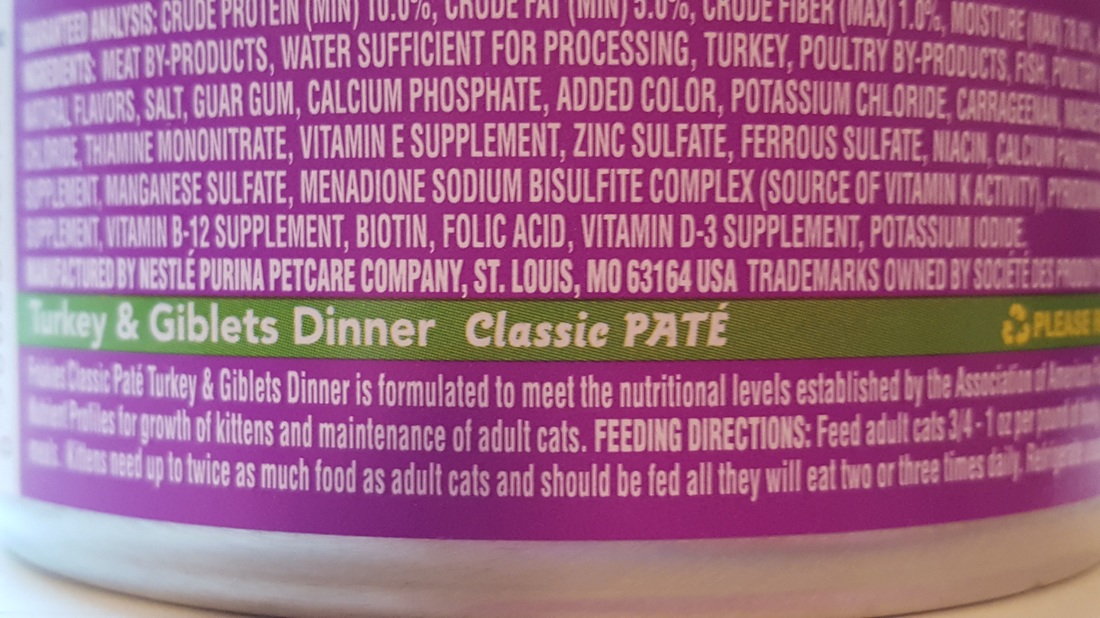


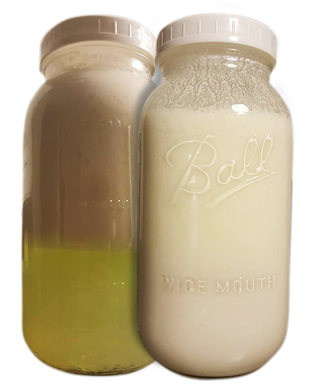

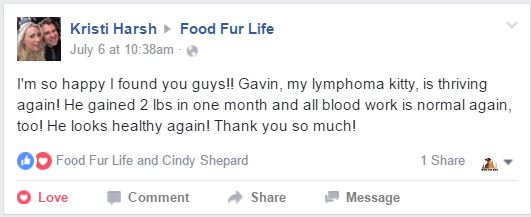
 RSS Feed
RSS Feed